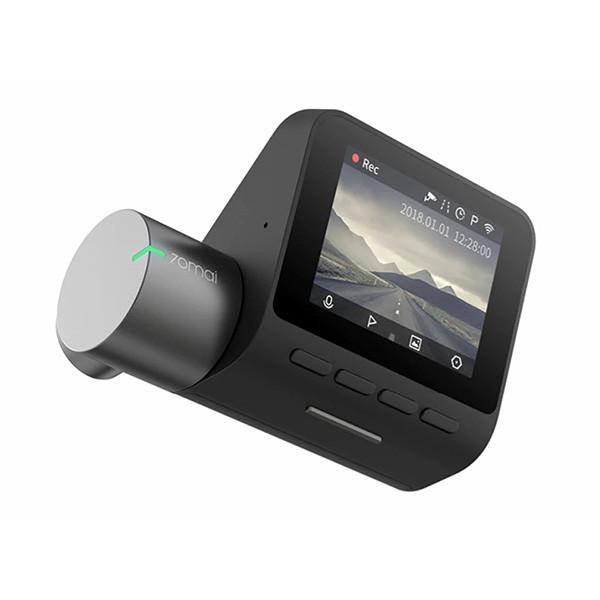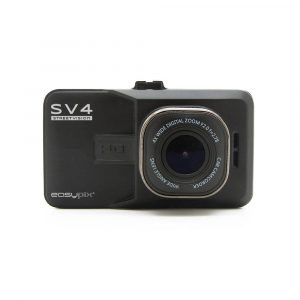Xiaomi 70MAI Smart Dash Cam Pro
Rated 2.00 out of 5 based on 1 customer rating
$42.99
Capture stunning footage while driving with the Xiaomi 70MAI Smart Dash Cam Pro camcorder – the perfect travel companion for any adventure.
Description
The Xiaomi 70MAI Smart Dash Cam Pro is a highly advanced and versatile dashboard camera that is designed to capture stunning footage while you’re driving. With a host of advanced features and cutting-edge technology, this device is the ultimate driving companion for anyone who wants to stay safe on the road.
The first thing that stands out about the Xiaomi 70MAI Smart Dash Cam Pro is its sleek and modern design. The camera is incredibly compact and lightweight, making it easy to install and use. It features a 2.7-inch LCD display that provides a clear and detailed view of the road ahead, while also allowing you to review your footage with ease.
One of the standout features of this dash cam is its advanced imaging technology. It features a Sony IMX335 image sensor, which allows it to capture high-quality 1080p video footage at 30 frames per second. The camera also has a wide-angle lens that provides a 140-degree field of view, ensuring that you capture everything that happens on the road.
In addition to its powerful imaging technology, the Xiaomi 70MAI Smart Dash Cam Pro also comes with a variety of advanced safety features. It has a built-in G-sensor that automatically detects and records any sudden changes in movement or collisions, ensuring that you have a record of any accidents or incidents that occur while you’re driving.
Other safety features include lane departure warning, which alerts you if you’re drifting out of your lane, and a collision detection and avoidance system, which uses advanced algorithms to detect potential collisions and warn you in advance.
Overall, the Xiaomi 70MAI Smart Dash Cam Pro is an exceptional device that is packed with advanced features and cutting-edge technology. If you’re looking for a reliable and versatile dashboard camera that can help you stay safe on the road, this is definitely a device worth considering. Its ease of use, advanced imaging technology, and advanced safety features make it one of the best dash cams on the market today.
Xiaomi 70MAI Smart Dash Cam Pro properties
| Product name |
70MAI Smart Dash Cam Pro |
| Max Frames per second (FPS) |
30 fps |
| Video Resolutions |
2592×1944 (30fps) |
| Type |
Dashcam |
| GPS |
Yes |
| HDMI |
Yes |
| Wi-Fi |
Yes |
| SD Type |
microSD |
| Max Supported Memory Size |
64 GB |
| Display |
Yes |
| Display Size |
2.0 “ |
| Battery Type |
Li-polymer |
| Aperture (Wide-tele) |
1.8 |
| Night Shot |
Yes |
| Still Pictures |
Yes |
| Still Picture Resolutions |
5 pixels |
| Still Picture Resolution (MP) |
5 |
| Height |
53.0 mm |
| Width |
88.0 mm |
| Depth |
18.0 mm |
| Weight |
301 g |
Frequently Asked Questions:
"How do I properly install and set up the Xiaomi 70MAI Smart Dash Cam Pro?"
To properly install and set up the Xiaomi 70MAI Smart Dash Cam Pro, follow these steps:
1. Unpack the dash cam from its packaging and remove all accessories such as the mounting bracket, suction cup, USB cable, and user manual. Clean the windshield where you want to install the dash cam and make sure it's completely dry. Attach the mounting bracket onto the windshield using the included suction cup. Ensure that the bracket is securely fastened. Connect the dash cam to the mounting bracket by inserting it into the cradle. Press firmly until you hear a clicking sound, indicating a successful connection. Turn on the car's ignition and connect the USB cable to the dash cam and the cigarette lighter adapter. The display will turn on automatically. Follow the on-screen prompts to set up the device by connecting it to your smartphone via Bluetooth or Wi-Fi. You can download the Xiaomi Mi Home app from the App Store or Google Play Store for this purpose. Once connected, create an account in the app and follow the setup wizard to configure various settings such as language preference, time zone, and date/time format. Enable GPS connectivity by inserting the included GPS module into the dash cam's slot. Adjust the camera's angle according to your preference by rotating it on its mount. Make sure that the dash cam is turned off when you park your car and remove it from the mounting bracket to avoid theft or damage. To view footage, connect your smartphone to the dash cam's Wi-Fi network using the password provided in the app. The app will display a live feed as well as recorded videos that can be saved locally or shared via social media platforms. By following these instructions, you should have successfully installed and set up the Xiaomi 70MAI Smart Dash Cam Pro. If you encounter any issues, refer to the user manual for further assistance.
How do I properly mount and connect the Xiaomi 70MAI Smart Dash Cam Pro to my car's windshield and power source for optimal usage?
To mount and connect the Xiaomi 70MAi Smart Dash Cam Pro to your car, follow these steps:
1. Clean the area where you want to mount the dash cam on your windshield with a microfiber cloth or glass cleaner. This ensures a clear and unobstructed view of the road ahead. Remove the adhesive backing from the mounting bracket included in the package. Attach the mounting bracket to your windshield using the 3M VHB (Very High Bond) tape provided. Make sure the camera is centered and level with the road ahead. Connect the power cable included in the package to the dash cam and then plug it into a compatible power source, such as your car's cigarette lighter socket or any other 12V outlet. Turn on the dash cam by pressing and holding the power button for three seconds until the LED light turns green. The camera will automatically start recording once it is powered on. Use the Xiaomi Mi Home app to connect your smartphone or tablet to the dash cam via Wi-Fi. This allows you to view live video feeds, adjust settings, and download recorded footage directly to your device. Mount your smartphone or tablet using the included phone holder to view the live feed while driving. Adjust the settings of the dash cam, such as the resolution, time/date format, and language preference through the app. You can also configure additional advanced features like GPS tracking, motion detection, and loop recording. For optimal usage, make sure the dash cam is securely mounted and connected, and that it is powered on before you start driving. This ensures that it captures high-quality footage of your journey. If needed, update the firmware of the dash cam through the app to ensure that it has the latest features and bug fixes.
"How do I connect my Xiaomi 70MAI Smart Dash Cam Pro to my smartphone using Wi-Fi?"
Make sure both your Xiaomi 70MAI Smart Dash Cam Pro and smartphone are connected to the same Wi-Fi network. Turn on the dash cam by pressing and holding the power button for two seconds until the LED light turns green. On your smartphone, download the Mi Home app from the App Store or Google Play Store. Open the app and sign in with your Mi account (you can create one if you don't have one already). Tap on "+" at the bottom right corner of the screen to add a new device. Select "Car Cameras" from the list of devices. Select "Xiaomi 70MAI Smart Dash Cam Pro" from the list of available devices. Follow the on-screen instructions to connect your dash cam to your smartphone. This will involve scanning a QR code or entering a code provided by the app. Once connected, you'll be able to view live footage from your dash cam and access its settings and recordings through the Mi Home app.
"How do I properly mount and install the Xiaomi 70MAI Smart Dash Cam Pro?"
Firstly, make sure that you have all the necessary tools and equipment such as a screwdriver, mounting bracket, USB cable, and the dash cam itself. Clean the windshield where you want to install the dash cam thoroughly using a microfiber cloth or glass cleaner. This will ensure a secure mounting and prevent any residue from affecting the camera's adhesive. Attach the suction cup on the mounting bracket according to the manufacturer's instructions. Ensure that it is firmly attached and can hold the weight of the dash cam. Place the mounting bracket on your windshield in a convenient location, preferably near the rearview mirror or center of the windshield for optimal viewing angle. Use the suction cup to securely attach it to the windshield. Connect the dash cam to the mounting bracket by inserting its magnetic base into the corresponding slot on the bracket. Make sure that the dash cam is properly aligned and centered. Insert one end of the USB cable into the dash cam's charging port, then connect the other end to your car's cigarette lighter or auxiliary power outlet. You may need to route the cable around the steering wheel or other obstacles for a clean and organized installation. Turn on your car and check if the dash cam is properly powered up. Use the buttons on the camera to navigate through its settings and adjust as necessary. Finally, make sure that the dash cam is securely mounted and will not interfere with driving or obstruct your view. Test its recording capabilities by starting your engine and making some test footage.
My 70MAI camera keeps disconnecting from Wi-Fi after I start recording, how do I resolve this issue?
1. Weak Wi-Fi Signal**: If the Wi-Fi signal is weak in your area, it may cause disconnections while recording. Try moving your router to a more central location or upgrading to a mesh network system for better coverage. Overheating Camera Body**: The 70MAI camera might be overheating due to prolonged use, especially during recording sessions. This can cause the Wi-Fi connection to drop. Check if there are any blockages around the camera's vents and ensure proper airflow. Interference from Other Devices**: Other devices in your home can interfere with the Wi-Fi signal and cause disconnections. Try moving other electronic devices away from the 70MAI camera or switching them off while recording. Outdated Firmware**: If the firmware on your 70MAI camera is outdated, it might be causing compatibility issues with your router. Check for any firmware updates available for your camera model and install them if necessary. Router Configuration Issues**: It's possible that there are some settings on your router that are causing disconnections. Try restarting your router and see if the issue persists. Physical Obstacles**: Physical obstacles between the 70MAI camera and your router can cause signal loss or interference, leading to disconnections. Check for any physical obstructions in the line of sight between the camera and router. Quality of Service (QoS) Settings**: Some routers have QoS settings that can prioritize certain devices over others. If you're using a QoS setting on your router, it might be causing issues with your 70MAI camera's connection. Try adjusting or disabling these settings to see if the issue persists. Camera Software Issues**: There could be software-related issues with the 70MAI camera that are causing disconnections. Check for any updates available for the camera's software and install them if necessary. If none of these solutions resolve the issue, it might be worth reaching out to the manufacturer or a professional for further assistance.
Why does my dash cam's GPS data sometimes show a different location than the one displayed on Google Maps after uploading the footage to the Mi Home app?
There are several reasons why this might be happening. Firstly, let's consider the potential causes for the discrepancy between your dash cam's GPS data and Google Maps. One reason could be due to the accuracy of the GPS signal received by your dash cam. While most modern GPS systems have a relatively high level of accuracy, they're not perfect and can sometimes provide incorrect or outdated locations. This is more likely to happen in areas with heavy tree cover, tall buildings, or near large bodies of water. Another possibility is that the GPS data recorded by your dash cam may be being interpreted incorrectly by the Mi Home app. This could be due to a variety of factors, such as an outdated mapping database or incorrect configuration settings within the app. It's also worth noting that the resolution and accuracy of the Google Maps data can vary depending on the location and the type of device used to access it. If you're viewing the maps on a smaller screen, like a phone, it may not be possible to view the level of detail required to accurately match the GPS data from your dash cam. Another possibility is that the Mi Home app may be using different mapping data than Google Maps. This could result in discrepancies between the two sources. If you're still experiencing issues with the accuracy of the location displayed on your dash cam's footage, I would recommend checking for any updates to the firmware or software on your dash cam and ensuring that it's configured correctly within the app. It's worth noting that this issue is not unique to Mi Home dash cams, as many other GPS-enabled cameras have reported similar issues in the past.
Before you buy Xiaomi 70MAI Smart Dash Cam Pro











Emmett –
As a postman living in Alaska, I know a thing or two about navigating tough driving conditions. So when I heard about the Xiaomi 70MAI Smart Dash Cam Pro, I was hopeful that it would help me capture important footage while on the road. Unfortunately, after using it for a few weeks, I can easily say that it falls far short of my expectations.
Firstly, the touted 2592×1944 (30fps) Video Resolutions aren’t all that impressive. In fact, I’ve seen better quality from cheaper dash cams. The footage is often grainy and unclear, and it’s difficult to make out details like license plates or road signs. Additionally, the Yes HDMI feature seems like a nice touch, but it hasn’t been particularly useful in practice.
When compared to other known Camcorders, the Xiaomi 70MAI Smart Dash Cam Pro just doesn’t measure up. It seems like it prioritizes gimmicky features over quality and reliability, which is the last thing I want in a dash cam. I wouldn’t recommend this camera to anyone who is looking for a reliable way to capture footage while on the road.
To make matters worse, the delivery of this Camcorder to Alaska was a bit of a nightmare. I had to wait for weeks for it to arrive, and when it finally did, it had been damaged in transit. The customer service team was unhelpful and unresponsive, which only added to my frustration.
In summary, I would give the Xiaomi 70MAI Smart Dash Cam Pro a rating of 2 out of 5 possible. It’s simply not worth the investment or the hassle of dealing with poor customer service.